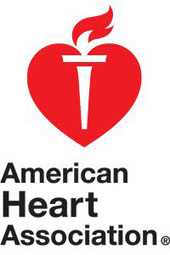Heart disease is the largest health threat in the U.S., just as it was in 1964 when President Lyndon B. Johnson declared February American Heart Month.
Advances in medicine have provided treatments, medications and more, but an overwhelming number of Americans continue to make unhealthy choices.
- 83% believe that heart attacks can be prevented but aren’t motivated to do anything.
- 72% of Americans don’t consider themselves at risk for heart disease.
- 58% put no effort into improving their heart health.
According to the American Heart Association, heart disease kills more people than all forms of cancer combined and heart attacks affect more people annually than the population of Dallas.
Cardiovascular disease (heart disease and stroke combined) kills about 2,300 a day. In most cases, heart disease is preventable if people are willing to make a few changes. These include:
- Don’t smoke.
- Maintain a healthy weight.
- Control blood sure and cholesterol.
- Treat high blood pressure.
- Get a minimum of 150 minutes of moderate activity each week.
- Have regular checkups.
Some heart attacks come on suddenly but most start slowly and there are warning signs. Call 911 if you experience:
- Chest discomfort. Most heart attacks involve discomfort in the center of the chest that lasts more than a few minutes – or it may go away and return. It can feel like uncomfortable pressure, squeezing, fullness or pain.
- Discomfort in other areas of the upper body. Symptoms can include pain, discomfort in one or both arms, back, neck, jaw or stomach.
- Shortness of breath. With or without chest discomfort.
- Other signs. Breaking out in a cold sweat, nausea or lightheadedness.
- As with men, women’s most common heart attack symptom is chest pain or discomfort. But women are somewhat more likely to experience some other common symptoms, particularly shortness of breath, nausea/vomiting and back or jaw pain.
Symptoms of cardiac arrest include:
- Sudden loss of responsiveness. The person doesn’t respond, even with a hard tap on the shoulders, or when asked loudly if he or she is OK. The person doesn’t move, speak, blink or otherwise react.
- No normal breathing. The person isn’t breathing or is only gasping for air.
If you suspect cardiac arrest:
- Yell for help. Tell someone to call 911. Ask someone to bring an AED (automated external defibrillator) as soon as possible if there’s one nearby. If you’re alone, call 911 and get an AED (if one is available).
- Check breathing. If person isn’t breathing or is only gasping administer CPR.
- Give CPR: Push hard and fast. Push down at least two inches at a rate of 100 to 120 pushes a minute in the center of the chest. Allow the chest to come back up to normal position after each push.
- Use AED.Use an automated external defibrillator right away. Turn it on and follow prompts.
- Keep pushing. Continue administering CPR until the person starts to breathe or move, or until someone with more advanced training takes over.
Source: www.heart.org, www.cdc.gov


